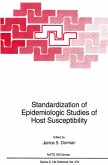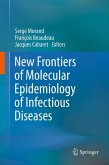The development and rapid implementation of molecular genotyping methods have re- lutionized the possibility for differentiation and classification of microorganisms at the subspecies level. Investigation of the species diversity is required to determine molecular relatedness of isolates for epidemiological studies. Methods for molecular epidemiology of microorganisms must be highly reproducible and provide effective discrimination of epidemiologically unrelated strains. A wide range of techniques has been applied to the investigation of outbreaks of tra- missible disease, and these have been critical in unraveling the route of spread of pat- gens for humans, animals, and plants. The choice of a molecular method will depend on the type of questions to be addressed, on the degree of genetic diversity of the species to be analyzed, and on the mechanisms responsible for generation of the diversity. The applications of molecular methods, singly or in combination, have greatly contributed in the past two decades to basic microbial science and public health control strategies. Molecular Epidemiology of Microorganisms: Methods and Protocols brings together a series of methods-based chapters with examples of application to some of the most important microbes. Both traditional and novel techniques are described, and the type of information that can be expected to be obtained by their application is indicated.
From the reviews:
"This book provides valuable insight into the molecular genotyping methods for differentiation and classification of microorganisms at the subspecies level ... . It is intended for researchers in the field of molecular epidemiology of microorganisms. Students as well as experts in the field will find this book quite informative and useful. ... This is a valuable resource providing state-of-the-art techniques applied to the investigation of transmissible diseases, enabling researchers to unravel the routes of spread of pathogens for humans, animals, and plants." (Omer Iqbal, Doody's Review Service, September, 2009)
"This book provides valuable insight into the molecular genotyping methods for differentiation and classification of microorganisms at the subspecies level ... . It is intended for researchers in the field of molecular epidemiology of microorganisms. Students as well as experts in the field will find this book quite informative and useful. ... This is a valuable resource providing state-of-the-art techniques applied to the investigation of transmissible diseases, enabling researchers to unravel the routes of spread of pathogens for humans, animals, and plants." (Omer Iqbal, Doody's Review Service, September, 2009)








